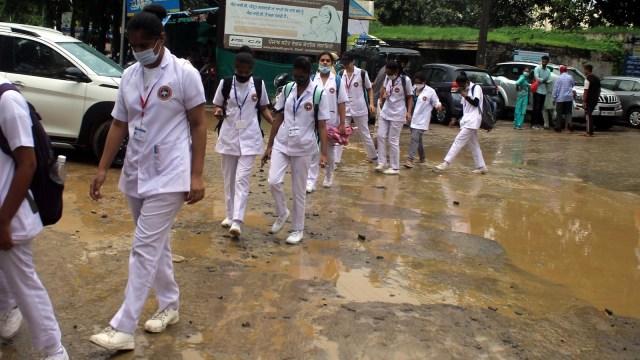Three months after its announcement, the National Medical Commission (NMC), the country’s apex medical education regulator, has suspended its decision to limit the number of MBBS seats to 100 per 10 lakh population in every state — a move that would have otherwise barred all five southern states from increasing their medical seat capacity for the next academic session (2024-25).

The regulation — titled “Guidelines for undergraduate courses under the establishment of new medical institutions, starting new medical courses, increase of seats for existing courses, and assessment and rating Regulation 2023” – states that approval for new medical colleges and an increase in the number of MBBS seats from the next academic session would be based on the seats-to-population ratio. It basically caps the number of undergraduate medical seats in a state to 100 per 10 lakh population.
Story continues below this ad
This provision is now in abeyance and will only be implemented for the 2025-26 academic year, after further stakeholder consultations happen, and until consensus can be developed on the matter. According to sources, the Health Ministry asked the NMC to reconsider the move amidst strong opposition from some states.
This is among a slew of decisions the NMC has either put in abeyance or rolled back recently following opposition by stakeholders. Only two-and-a-half months ago, it put on hold its new guidelines that made it mandatory for doctors to prescribe only generic drugs, following backlash from the country’s largest doctors’ body, the Indian Medical Association (IMA), as well as the Indian Pharmaceutical Alliance (IPA), which described the move as “not feasible”.
ExplainedBehind protest by states
The prescribed limit of 100 seats per 10 lakh population would have allowed addition of 40,000 more seats, but only in states like Bihar and Jharkhand, where there is over 70% deficiency. This led to a backlash from states that have already exceeded the seats-to-population ratio, including all five southern states.
The rationale behind capping the total seats to 100 per 10 lakh population, according to people in the know, was to ensure equitable distribution of resources, especially faculty members, across the country. This restriction would have allowed the addition of 40,000 more MBBS seats, but only in states such as Bihar and Jharkhand, where there is over 70% deficiency as per the new seats-to-population ratio norm. This is what triggered a backlash from states that have already exceeded this ratio, leaving them ineligible for further expansion.
 Here’s the list of states that have exceeded seat limits. (Graphic by Abhishek Mitra)
Here’s the list of states that have exceeded seat limits. (Graphic by Abhishek Mitra)
According to data analysed by The Indian Express, at least 13 states and UTs, including all five southern states of Tamil Nadu, Andhra Pradesh, Telangana, Karnataka and Kerala, have more than 100 seats per 10 lakh population. The new NMC norm would have directly affected them.
Story continues below this ad
Reacting sharply to the potential impact of the new NMC norm, Tamil Nadu Chief Minister M K Stalin had said that it amounted to “direct encroachment” on state rights by the Centre and disproportionately penalised states which have invested heavily in public health infrastructure. With 11,225 seats, Tamil Nadu has the highest number of undergraduate medical seats in the country, exceeding the cap by 46%; as per the NMC’s seats-to-population ratio, it should have 7,686 seats.
Karnataka Minister of Medical Education, Sharan Prakash Patil, had said the move would affect medical education in the state as the government had plans to set up more institutions. He had said the stakeholders weren’t consulted on the move. Karnataka has 11,020 MBBS seats as opposed to the desired limit of 6,769.
Senior officials from Telangana and Karnataka said suspension of the decision would help the government to set up at least one medical college in each district.
In Telangana, there are at least eight districts that don’t have any medical college. Inspections by the medical education regulator for colleges in these districts are scheduled for December, said a senior official from the state.
Story continues below this ad
An official from Karnataka said at least 11 districts don’t have a government medical college. “Our feasibility and essentiality certificates, required to be submitted when applying for new colleges, said the required doctor-patient ratio has not been reached in rural areas. We want children from these districts to study medicine at government colleges and provide specialty care to their communities,” said the official.



 Here’s the list of states that have exceeded seat limits. (Graphic by Abhishek Mitra)
Here’s the list of states that have exceeded seat limits. (Graphic by Abhishek Mitra)





























